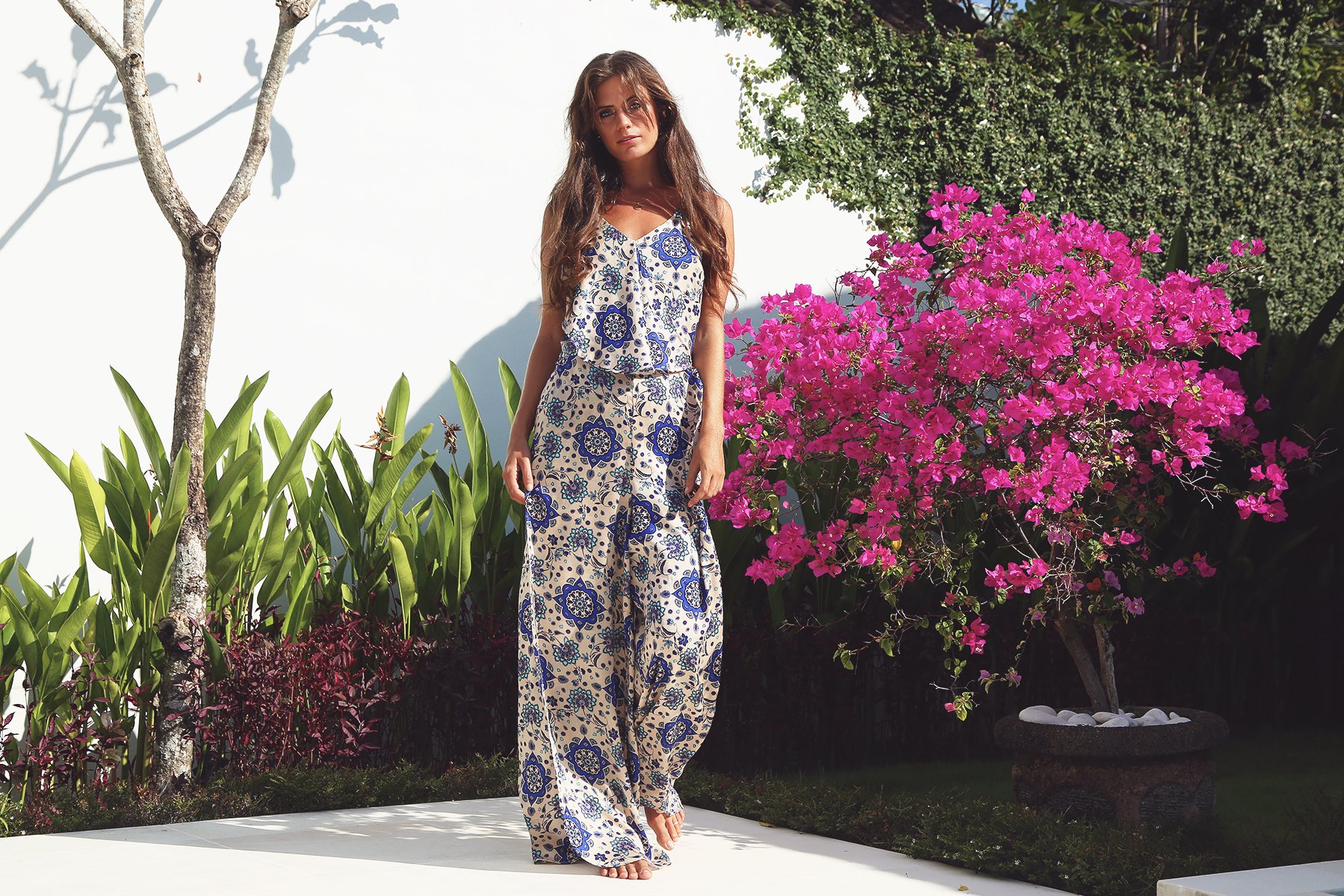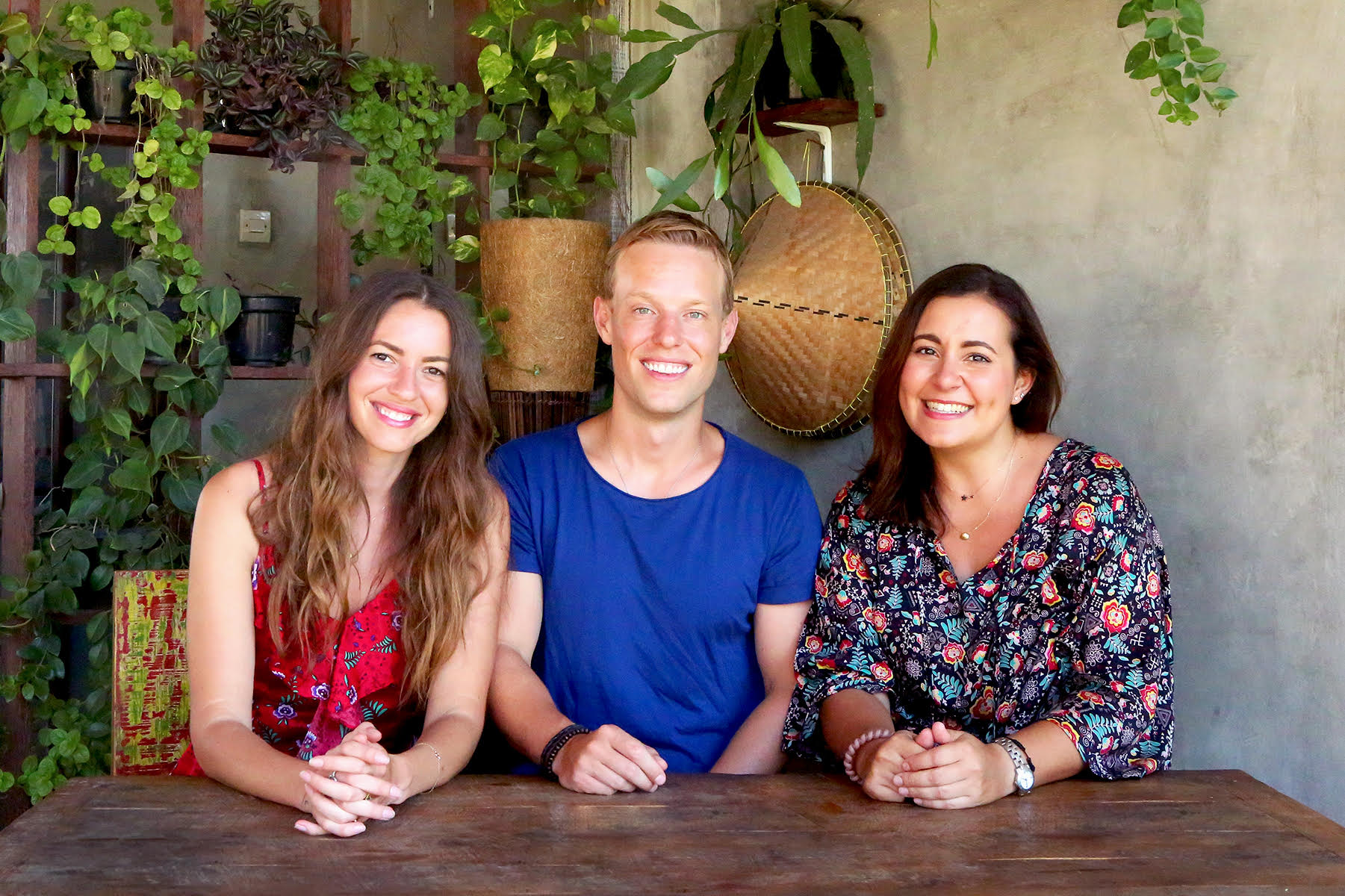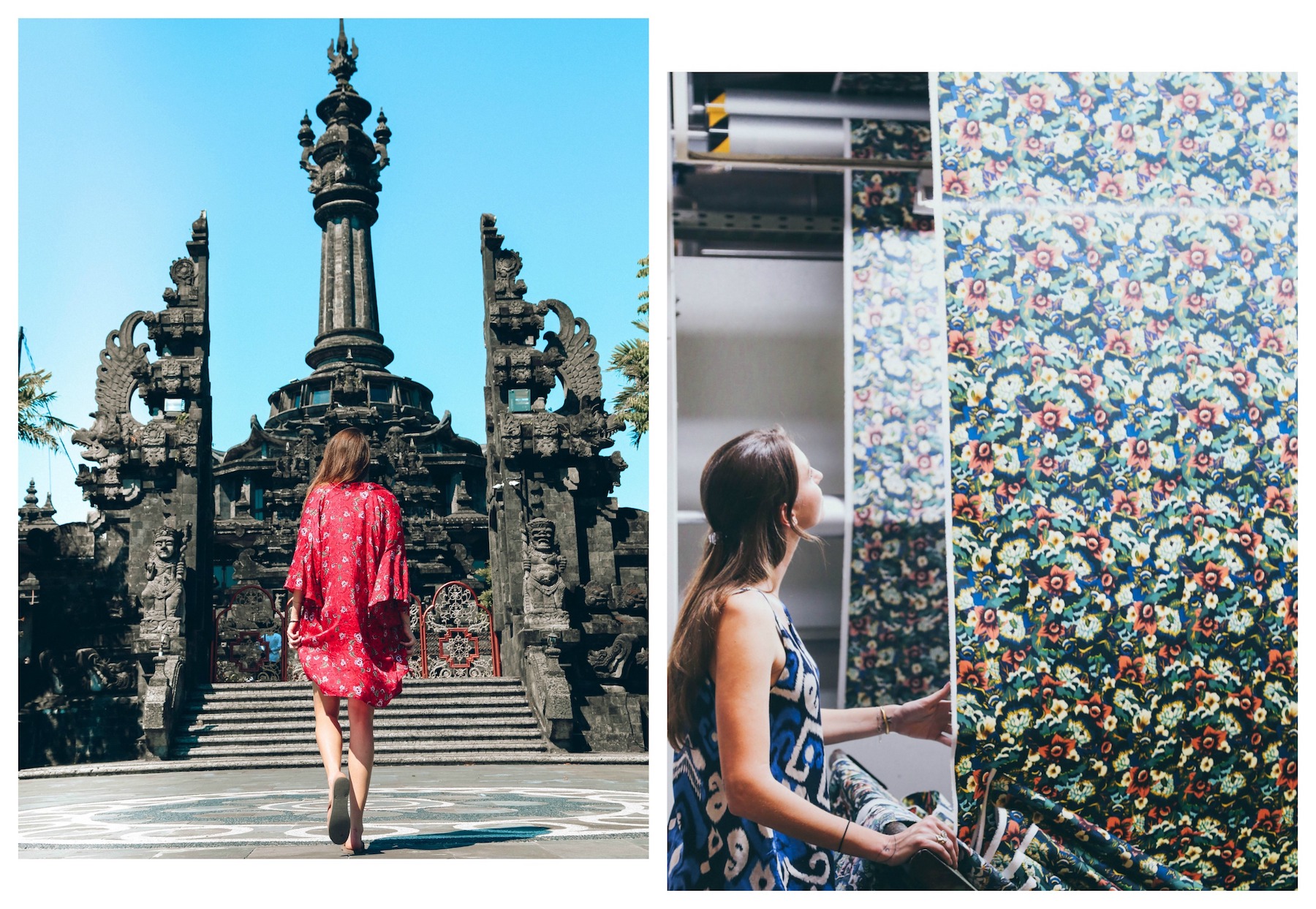In today’s fast-paced world, we as consumers are constantly exposed to the newest, and next best fashion trend. More often than not, attractive and cheap prices distract from the harsh realities of fast fashion and the impact it has on the environment and factory workers. TAMGA Designs is a sustainable lifestyle movement that creates vibrant and premium quality clothing from sustainable materials with exceptional working conditions for every worker throughout the process. I caught up with Yana Barankin, the co-founder of TAMGA Designs in Bali, Indonesia to talk about her journey to create TAMGA Designs as well as the perils of the fast fashion industry.

How and why did you come up with the idea for TAMGA Designs?
Eric (Yana’s fiancée) and I were living in Dhaka, Bangladesh as aid workers for two and a half years. We arrived in Dhaka shortly after the 2013 Rana Plaza collapse which claimed 1134 lives and injured more than 2500. Being there, you can’t un-see what’s around you so we were constantly faced with the ways that our favourite brands manufactured, and it opened our eyes to this entire fast fashion industry that we never really considered to be harmful to people and the planet.
*To give you some background, the 2013 Rana Plaza collapse was a structural failure where a five-story commercial building collapsed. According to BBC1, this collapse is considered to be one of a deadliest garment-factory accident in history. The Rana Plaza housed a number of separate garment factories which manufactured for Joe Fresh, Primark, Benetton2, Monsoon3, Wal-Mart4, Matalan, and Mango5 to name a few. Most of these companies have denied any connection to the commercial building.*
TAMGA started as a small project for me so I got fabric from the local market, started working with a team of tailors making kimonos and selling them on Etsy. It was just for fun because things in Dhaka are so insane and chaotic so you need those kinds of hobbies to keep yourself busy. TAMGA grew over the year and a half, we started getting traction and we started donating some of the proceedings to a local orphanage. From there, we saw a need for brands to set a positive example in fashion and for it to be done sustainably, ethically and more consciously. We left our respective jobs in Dhaka and asked my friend Anna, who is a designer by trade, to come with us. Eric and I bought a one-way ticket to Indonesia and the rest is history.

What was the inspiration for the name TAMGA?
TAMGA goes back to my mom’s roots. Generations ago, there used to be these Gypsy travelling tribes in Eastern Europe in Crimea and one of these tribes had a name and a stamp that resembled a pendulum to recognize the tribe. The Crimean and Tartars bore a tamga stamp which looked like an “M” with an elongated middle piece. I thought that since we (Eric, Anna and I) are so inspired by travel, culture and by connecting people together, TAMGA was just a perfect fit. And the website wasn’t taken so that was good too.
The vibrant and beautiful prints that adorn the long, flowing garments flawlessly emulate the bohemian style of the pieces. The magnificence of these items is that they are so incredibly versatile and anyone, regardless of their style preference, can confidently wear them.
What were you doing before you started TAMGA?
Eric was working for the United Nations in the trade sector. I was working for the Bill and Melinda Gates Foundation Save the Children. I was doing many different projects with a focus on poverty reduction and child protection. Both of us were very much involved in international development which is how we approach TAMGA. Although I have a fashion background, we didn’t necessarily approach TAMGA with a fashion lens. We approach it more like a social solution that makes really great clothing for people to wear.
Anna, our designer, was working for big companies like Indatex which owns Zara and other big names. She was designing with Indatex, and after spending three years in Dhaka, she was also fed up with the way the fast fashion industry operates. As a consumer, how do you veer away from fast fashion?
As a consumer, how do you veer away from fast fashion?
With the digital age right now, information is very accessible. What I have done to shift away from fast fashion over the past few years is finding out if the brands I love are producing at a certain level, whether it’s transparency, using sustainable materials, or giving back to an organization. There’s no company that’s perfect, that doesn’t exist. There is no holy grail of sustainable fashion. What we can ask out of companies is what they are doing and what can they still do. Recognizing that there is room for improvement is important. Finding out if the brands I love and the stores that I’m shopping from are taking that step to improve their processes or production will encourage my support. If they don’t, I’ll send them an email or talk to the manager asking what they’re doing, and how they’re operating. It’s easy to start a conversation and ask these questions, and if you’re not getting an answer, there’s probably a good reason why. There’s a plethora of guides online, lists, apps, the information is readily available. It can be overwhelming at first, but once you start digging, it’s fairly black and white. Once you start looking at products and goods as long-term investments rather than a quick purchased because it’s pretty, your entire way of viewing how you buy things and how you vote with your dollars starts changing.
 What are some challenges you faced and how did you overcome them?
What are some challenges you faced and how did you overcome them?
Challenges are ongoing, there is never a day when there isn’t a challenge. Starting out, I would say we set the bar pretty high when it comes to which suppliers and which factories we want to work with, so we took our time finding them. It took us about 8 months in Indonesia to secure our supply chain from raw material to final product because we actually trace it all the way back to the fibre. That in itself is a big undertaking and to add the ethical and sustainable side to it, it becomes even more time consuming and challenging. We face a lot of cold calls, flights, showing up, trying to connect the dots and learn as we go because we went into it not knowing much about the sustainable fashion industry and what sustainability really means in terms of materials. As we grow, growth is a challenge trying to keep up with things, trying to hire people and meeting production deadlines.
We are still a really small team, outside of our interns. It’s just Eric, Anna and I and a print designer who is on contract. We are a small team so it’s hard to get everything done in a day.
Is there anything you’d do differently?
Now, we have a much better understanding of business. With fashion, you really need to have a business knowledge and at least some background and we didn’t have that. We had a whole bunch of the other stuff, but none of us went to business school. We took some business courses but it’s so different when you apply it to real life. We have definitely taken a more business focus lens and a more e-commerce focus lens. We are really putting all of our energy into online sales and business to the consumer rather than wholesale. That requires a lot of emphasis on gathering data, analytics and different ways of advertising. The internet world is just crazy and we didn’t know much about it. Once you start learning and implementing these things, it really pays off over time.
Eric takes care of our SEO and he reads a lot. He has a lot of calls with some of the platforms that we use, so he takes the initiatives of doing one on ones and getting feedback. We learn as we go, and there’s a lot of really good resources online and in Toronto. We are part of the Fashion Zone at Ryerson University so there are many seminars and people to connect with. It’s really important to take the initiative to get out there and seek those resources.

Running a business with your fiancée must teach you a lot about yourself and Eric. Has your relationship changed since you launch TAMGA?
Eric and I are really lucky because we have different strengths in the business so we complement each other really well, we can work autonomously and hit things that we need to. We are best friends, and we are going to be husband and wife in two months. Luckily, we haven’t really had any bumps along the way that have affected our relationship. I think if anything, it’s being together through the past year and a half of running TAMGA has made us stronger. It’s incredible to have that moral support of the crazy roller coaster that goes on when having a start-up. Naturally, you see sides from your partner when you’re running a business together. The highs are high and the lows are low, but at the end of the day, we are very thankful. By having each other, we’re going to be able to achieve great things.
How do you balance work and family life?
That was a hard one – we still work a lot but I would say that we take more time ourselves to work out, go out and spend time with our friends, go to the cottage with our dog Oliver. Bali has been really good for us this time because we haven’t been back since the launch. Being here spending time outside, watching sunsets, going out, checking out new places around here, just making sure we are enjoying every minute of it. You have to understand that life actually balances your work. If work determines your every second of the day, it’s not going to be long-lasting and it’s not sustainable. By focusing on life, you’re feeding into the business, you feel refreshed, inspired and full of ideas.
Burn out is a real thing, and that is something we’ve experienced. If you don’t take a break, you’re ultimately hurting what you’re invested in. It’s really beneficial to step back and get a reality check. We have strategy meetings almost every week for a few hours and they are so helpful. They make us step back and think about what the priorities are, and what will actually make the most impact on your business this week. What are the next steps for TAMGA? Where can we expect to see TAMGA in 10 years?
What are the next steps for TAMGA? Where can we expect to see TAMGA in 10 years?
Right now we are producing our 3rd collection and working on the 4th so it’s a busy time! We are currently a pending B-Corp company and are joining 1% for the planet in a few weeks (where 1% of all of our sales will go directly to the Sumatran Orangutan Society). In terms of expending TAMGA, we are always looking at new fabrics and cutting-edge technologies to reduce the environmental impact of fashion. We plan on expanding our offering (in terms of the range of fabrics we use) whilst using the most progressive and sustainable materials available. In 10 years we hope to be leaders in the industry of sustainable fashion.
Our plans are to have a flagship location both in Canada and Australia (as so many of our customers are in Australia) and be part of a lifestyle movement that educated consumers and makes purchasing purposeful rather than impulsive and ’trendy’. Most of all, we hope to influence our Canadian government to hold brands accountable as to the goods they import into Canada. Certain conditions such as environmental impact, production practices and transparency should be a requirement by companies producing over-sees. This is more of a 20-year goal but we’re aiming high and for a brighter future for our planet!
What advice would you give to anyone thinking of beginning a start-up?
Whatever your business idea is, it has to be the reason you wake up in the morning. I can’t see myself right now doing anything else. As much of a roller coaster as it has been, and as crazy and uncertain as it has been, the thought of not doing it makes me more nervous than doing it and failing. I would rather do it and fail but give it my all rather than going to 9:00-5:00 job or going back to what I was doing. Whatever it is, it has to be something you see yourself doing for 30-40 years, and hopefully, it’s something that will have a long-term impact on the environment, people, whether it’s social, political, whether it’s really good product or service. You have to be 300% in it.
xxx
Photos: Courtesy of TAMGA Designs
